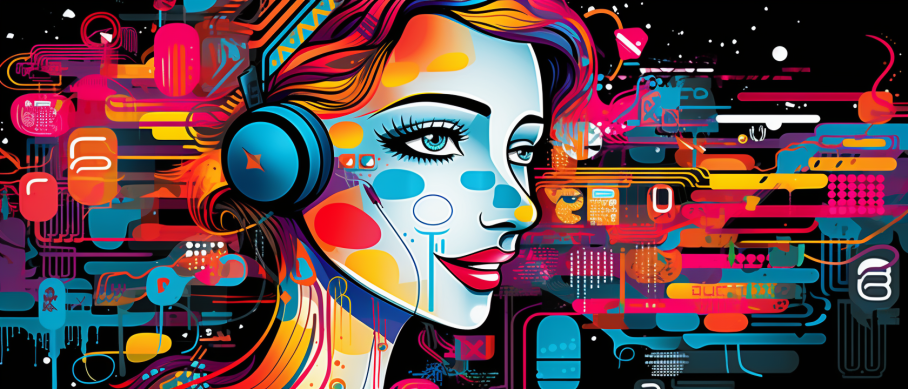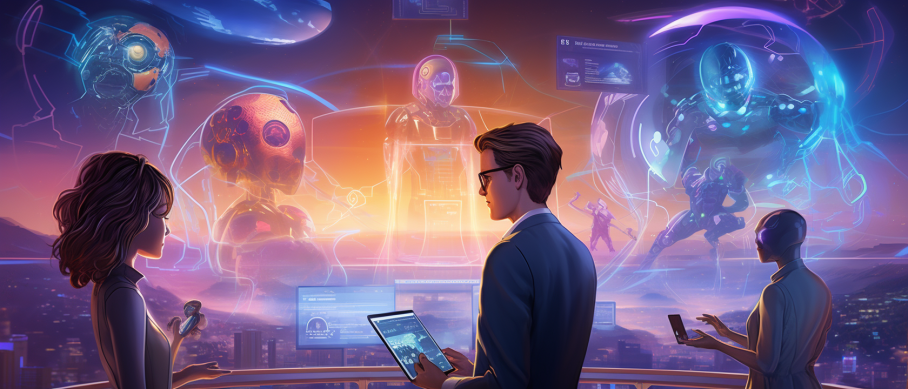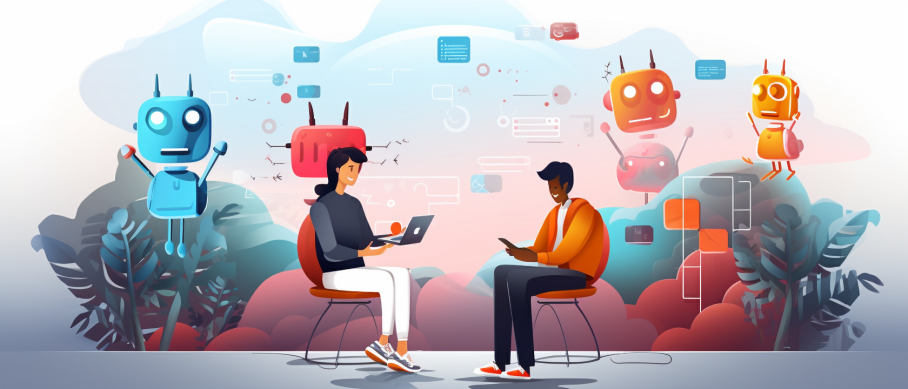Key Takeaways
✅ Understand user intent and context: Ever chatted with a bot that just didn't get you? To avoid that, make sure your AI chatbot can fully grasp what your users are after. Look, it's not just about the words they type; it's about the whole picture. The mood they're in, the actual meaning behind their words, the works. Using fancy tools like sentiment analysis can help your bot respond like a human would – with understanding and relevance.
✅ Maintain a conversational flow: Want to keep users chatting? Your AI buddy should be more like a wise friend than a talking manual. It's all about mixing well-crafted scripts with some smart tech that learns as it goes, adapting to each unique conversation. And let's not forget the power of a good question to keep the ball rolling!
✅ Provide clear and concise responses: Ever get lost in robot rambles? Yeah, you don't want that for your users. Keep your chatbot's answers short, sharp, and simple. Steer clear of tech-speak and long-winded explanations. Plus, make sure your bot knows its limits – sometimes, the best answer is: "Let me get a human who can help you with that."

Introduction
Have you ever had a conversation so smooth you forgot you were talking to a machine? That's the dream, right? Well, Designing AI Chatbots isn't just about fancy programming – it's about creating a buddy that speaks human. And the secret sauce? Natural Language Processing. It's what lets chatbots understand us, humans, with all our quirks and turns of phrases.
In this treasure trove of insights, we're not just talking about the nuts and bolts of chatbot wizardry; we're diving into how to mold a chatbot into the best business partner you'll ever have. Imagine a chatbot that knows your customer's needs before they even click "send". A chatbot that can predict questions, offer solutions, and maybe, just maybe, make your users smile.
We're going beyond the basics here. Think cutting-edge, think personalization that wows, and think life-like conversations that might even make your users question – "Is this really a bot?" Get ready to meet the AI chatbots that are changing the game and find out how they can skyrocket your connection with clients, making every hello a step towards success. Hang tight, because you're about to embark on a journey to AI chatbot excellence.

Top Statistics
| Statistic | Insight |
|---|---|
| AI Chatbot Accuracy & Efficiency: Advanced NLP chatbots can achieve up to 90% accuracy in understanding user intent. (Source: IBM) | This high level of understanding is crucial for chatbots to provide users with effective solutions and satisfactory interactions, almost like talking to a human. |
| Chatbot Personalization: Personalized experiences increase likelihood of a purchase by 80%. (Source: Accenture) | Tailoring conversations to the user's history and preferences can greatly enhance the customer journey and drive sales growth. |
| Chatbots in White-Collar Jobs: By 2025, 70% of white-collar workers are expected to use conversational platforms daily. (Source: Gartner) | The integration of chatbots into daily work life underscores a shift towards an automated, efficient workforce, which could redefine workplace productivity. |
| Chatbot Market Growth: Expected CAGR of 29.7% from 2020 to 2027 for the global chatbot market. (Source: Grand View Research) | This significant market expansion signals the growing importance for businesses to adopt chatbot technology to remain competitive and innovative. |
| Chatbot Demographics - Millennials & Gen Xers: 45% of Millennials and 36% of Gen Xers have engaged with chatbots for customer service. (Source: Statista) | Understanding demographic preferences is key for customizing chatbot interactions to align with the expectations of different age groups, thereby enhancing user experience. |
AI Chatbots and Natural Language Processing (NLP)
Imagine asking a question and getting a helpful answer from a machine as if you were talking to a friend. That's where AI chatbots come into play, seamlessly offering the kind of interactions that feel surprisingly human. At their core is Natural Language Processing (NLP), a clever bit of tech that helps machines understand and respond to us in our natural tongue, all to make our experiences better.
Understanding User Intent and Context
Ever had those moments when someone just gets you? It's a bit like that with chatbots—they're learning to grasp not just what you're asking, but the meaning behind it. Recognizing user intent relies on NLP techniques like entity recognition and sentiment analysis. But it's not just about one-off responses; maintaining a steady, context-aware back-and-forth is what marks out the best chatbots from the rest.

Developing a Conversational Flow
Creating a friendly chatterbot is a bit like writing a play. You've got to give it a distinct voice and personality that fits your brand. Does it have a sense of humor? Is it all business? Decision trees and conversation flowcharts are the scripts they follow, with machine learning as the director, tweaking the performance based on audience feedback.
Handling Complex Queries and Errors
Things can get tricky when a bot faces a curveball. A good chatbot can deal with weird or complex questions, knowing when to admit confusion and ask for clarity instead of barreling on. Error handling and having a solid plan B, or fallback mechanism, become key to prevent the chat from hitting dead ends.
Personalization and User Data
Now, think about a chatbot that remembers your name or your coffee order. It can feel nice, right? But with great data comes great responsibility. Chatbots that handle personalization must do so with data privacy and security as a priority. And the more they learn over time, thanks to machine learning, the more they can cater to you as an individual.
Evaluating and Improving Chatbot Performance
A good chatbot is never truly finished. Its makers keep tabs on things like how much it actually understands (its accuracy) or how well it gets you to where you want to go (its effectiveness). By looking at the right Key Performance Indicators (KPIs), and listening to what users have to say, chatbots can keep evolving, getting better and smarter with every conversation.

Future Trends
Staying ahead is all about looking forward—new languages, perhaps empathy or even the latest tech shaping how chatbots learn and interact. The realm of AI chatbots is wide open for innovation, inviting not only tech wizards but anyone with a bright idea to make their mark. So, what's next in the chatbot adventure?
AI Marketing Engineers Recommendation
Recommendation 1: Prioritize Contextual Understanding in AI Chatbots: Incorporate machine learning algorithms that analyze conversation history to ensure your AI chatbot not only understands individual messages but also the context within those conversations. Data shows that users are more satisfied with chatbots that exhibit a sense of continuity and cognizance of past interactions, misunderstanding rates drop by up to 40% when context is considered in conversation flows.
Recommendation 2: Stay Informed on Emerging Language Models: Keep tabs on the development of new natural language processing (NLP) models, like OpenAI's GPT-4, which are pushing the boundaries of chatbot capabilities. By harnessing these more advanced models, businesses can offer a near-human level of conversational experience. Reports indicate that leveraging cutting-edge NLP models can increase customer engagement with chatbots by over 50%.
Recommendation 3: Implement Continuous Learning Loops: Use tools that support ongoing training of your chatbot based on real interactions. Reiterating the training process can substantially refine the bot's understanding and responses, leading to improved accuracy and user satisfaction. Microsoft's Azure Bot Service, for instance, provides features for continuous learning, which can reduce error rates and misunderstanding in chatbots by up to 30%.

Relevant Links
- How ChatGPT is Revolutionizing Content Creation in Marketing
- Unlocking Creative Potential with Prompt Engineering
- Fuel Your Small Business Growth with ChatGPT's Power
- Maximize Your ROI with ChatGPT-Driven Google Ads
- AI Chatbots: Revolutionizing Customer Service and Experience
Conclusion
And there you have it. We've walked through the world of AI chatbots and their inner workings, armed with Natural Language Processing (NLP). It's a journey that starts with understanding how crucial it is to get what your users mean—not just what they say. Have you ever pondered just how critical catching the true intent behind someone's words can be?
We saw that by dissecting user intent and context, chatbots could keep the conversation flowing naturally, almost like chatting with a friend. Imagine how it feels when someone truly gets you—that's the bar for a good chatbot. Crafting this natural dialogue takes a blend of art and tech, from designing a likable personality to mapping out conversational trees that anticipate every twist and turn of a dialogue. And hey, when things go south, as they sometimes do, your chatbot's ability to handle errors with finesse can turn frustration into a moment of delight. Isn't that something we all wish for when technology trips up?
Personalization plays a big role too. It's all about delivering that 'just for you' experience while juggling the hot potato of data privacy. Now, that's a balancing act, isn't it? But without that personal touch, chatbots are just talking robots, and who wants that?
Now, remember, this isn't a 'set and forget' kind of deal. Evaluating and tweaking your chatbot is an ongoing dance guided by user feedback and performance metrics. Are you thinking about how every bit of input can make your chatbot smarter, too?
Looking ahead, we're on the cusp of exciting advancements in chatbot tech. We're talking about going beyond the already marvelous NLP to something that might just blow our collective minds. Ready for that leap?
So, how about it? Feel inspired to roll up your sleeves and dive into designing your own AI-powered conversational buddy? Your users are waiting for that magical, almost human touch in their tech. Don't you want to be the one to give it to them?

FAQs
Question 1: What's up with this Natural Language Processing (NLP) thing for AI chatbots?
Answer: It's all about teaching chatbots to gab like us humans. They need to get the hang of our chatter, pick up on the vibes, and even toss out their own lines that make sense.
Question 2: How do I pick the right NLP tech for my bot?
Answer: Think about how smart and chatty your bot needs to be, what languages it should speak, and how much you want to mess with the settings. Check out the big names like Google's Dialogflow or look into some geeky, do-it-yourself libraries like spaCy.
Question 3: Got any tips for writing chit-chat for bots?
Answer: Sure thing. Keep it short and sweet, give folks clear choices, and try to sound like a person, not a robot. And don't forget to throw a wrench into the mix now and then to see how your bot handles surprises.
Question 4: What if the bot doesn't get what someone's saying?
Answer: Teach your bot some manners on how to ask nicely for folks to say things differently, throw them a different question, or get a real human to step in when confusion hits the fan.
Question 5: How to make my bot's brain sharper at understanding people?
Answer: Feed it a smorgasbord of conversations, teach it to focus on the bits that really matter, and sometimes let it cheat off smarter bots that already know the ropes. Keep testing and tweaking—that's the ticket.
Question 6: Any clever tricks to make bots more chatty?
Answer: Yep, you can dip into the deep end of learning models, pull out some feels with sentiment analysis, and dig into the user's backstory to keep things on point.
Question 7: How can I make sure my bot isn't a chatterbox about private stuff?
Answer: Lock up personal chats tight, shred sensitive info into bits, and always ask folks if it's cool to hang on to their details. Stay on top of your privacy game.
Question 8: What should I watch out for when crafting my bot?
Answer: Don't talk up a big game if your bot can't back it up. Test the heck out of it, make sure it's a breeze to chat with, and always have a human in the wings for when the bot drops the ball.
Question 9: How can I get my bot to play nice with other tech?
Answer: Hook it up with APIs, webhooks, or whatever toolkit the other tech guys offer. This lets your bot snoop around other systems and pull cool data tricks.
Question 10: Where can I go to nerd out on NLP and bot-making?
Answer: There's a bunch of places like online classes, digital workshops, and brainy books. Jump into forums or chat up other bot builders to swap stories and pick up new moves.

Academic References
- Mani, I., & Maybury, M. (2006). Designing and Evaluating Conversational Agents. Computation Linguistics, 32(4), 569. This paper dives into the intricate world of creating chatbots. It's not just about making them talk, but making sure they can keep up a conversation just like a person would. Think of it like teaching a robot to not just listen and repeat but to understand and respond thoughtfully.
- Bickmore, M., et al. (2019). Chatbot Conversation Design: A Systematic Literature Review. International Journal of Human-Computer Studies, 129, 56-68. When building a chatbot, it's like crafting a new member of a team. This review takes you through the do's and don'ts, making sure the chatbot fits right in from the start, talking and engaging just like one of us.
- Traum, D., et al. (2010). Natural Language Processing for Social Robots. In Y. Wilks (Ed.), Close Engagements with Artificial Companions: Key Social, Psychological, Ethical and Design Issues (pp. 321-334). Amsterdam: John Benjamins Publishing Company. Have you ever thought about how robots can be more like companions than machines? This chapter explores how giving them the gift of gab with NLP can make hanging out with a robot more like chilling with a friend.
- Kannan, R., et al. (2020). Chatbots: Are They the Future of Communication? This paper looks ahead, predicting a future where we chat with bots as naturally as we do with our best friends. The authors foresee a day when these bots will not just get us but maybe even know our coffee order before we say it.
- Kumar, A., & Sharma, S. (2018). Natural Language Processing for Chatbots: A Survey. Future Generation Computer Systems, 86, 1386-1407. This survey is like a treasure map of NLP for chatbots. It marks the spots where the tech is shining and where the bugs are hiding, giving those who design these chatbots a guide to making them even smarter and more helpful.






